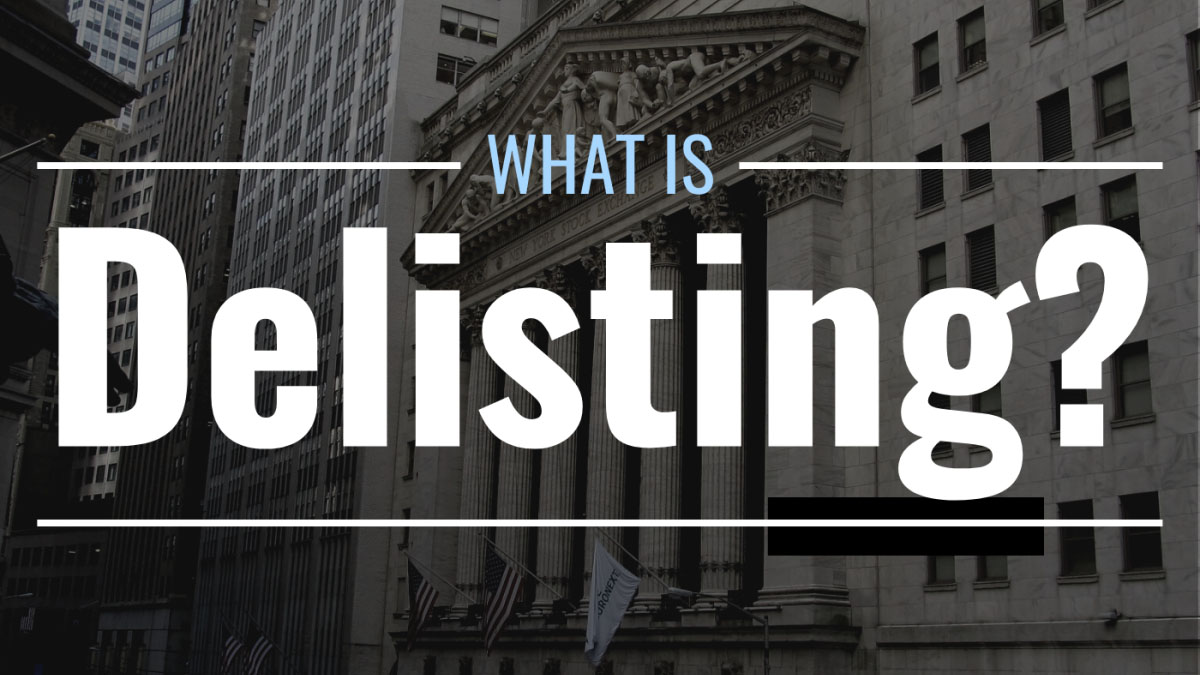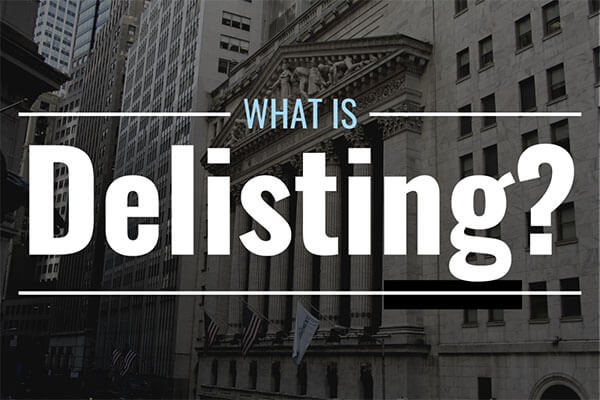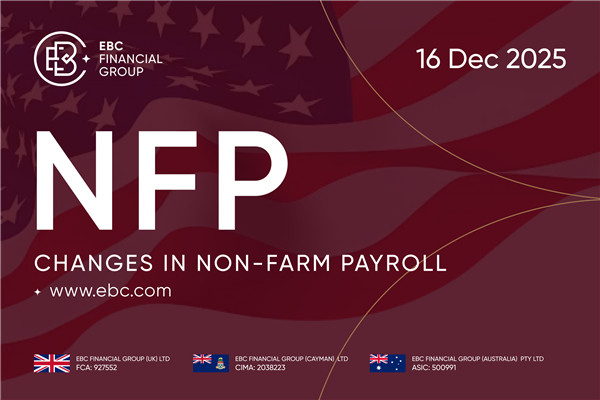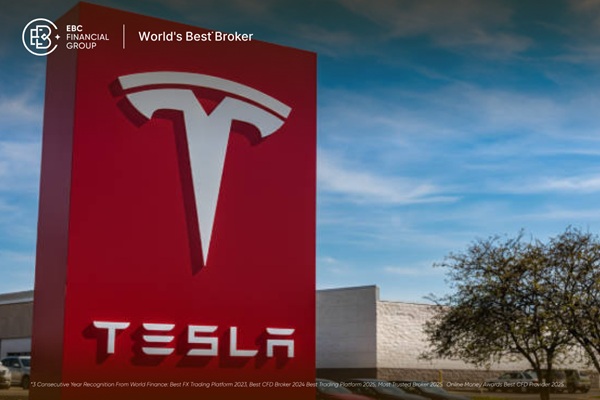When we think of delisting, several notable examples come to mind. For instance, Didi achieved the fastest delisting in history, announcing its removal just six months after listing. Similarly, Luckin Coffee was delisted from Nasdaq due to fraudulent claims, and LeTV also faced delisting. These instances often carry negative connotations, but what exactly does delisting entail? Why do companies opt for delisting? This article explores the concept of delisting, its implications, and the reasons behind a company's decision to delist.
1. What is Delisting?
Delisting refers to a company's shares being removed from a stock exchange and no longer being traded on that platform. This can occur if the company fails to meet listing requirements, suffers financial decline, breaches trading rules, or voluntarily exits the exchange. After delisting, the company's shares are not available for trading on the main market but might still be traded over-the-counter or on alternative platforms.
In essence, delisting signals that a company's shares are no longer publicly traded. While companies often generate excitement and a positive outlook when going public, the term 'delisting' can signal significant trouble and raise concerns about the company's stability
2. What are the Types of Delisting?
-
Voluntary Delisting
The company itself chooses to delist from the stock exchange. This may be
because the company finds that it is no longer in its interest to be listed on
the exchange where it was listed, or due to reasons such as privatization,
mergers, etc.
-
Involuntary Delisting
Exchanges or regulators force a company to delist, usually because of the
company's violation of listing regulations, deterioration of financial
condition, violation of exchange rules, etc.
One common reason is that the company is not doing well. The Securities Regulatory Commission and exchanges will require companies to meet a series of
indicators to ensure that they do not pose excessive risks to the public. If the
company's performance is poor and fails to meet the requirements, the exchange
or the China Securities Regulatory Commission will force the company to delist.
Different exchanges have different rules. For example, A-share companies that
have suffered losses for two consecutive years will be marked as "ST," and
companies that have suffered losses for three consecutive years will be
delisted. The Nasdaq and New York Stock Exchange have a rule that if a company's
stock price remains below one dollar for thirty consecutive days, it will
receive a delisting warning. If it does not correct itself within ninety days,
it will be forcibly delisted.
-
Delisting due to bankruptcy
The company was forced to delist due to bankruptcy. In this case, the company
may be liquidated or reorganized.
-
Other Exchange-Mandated Reasons
The exchange may have a set of regulations that require companies to maintain
certain financial health and transparency. If a company fails to meet these
requirements, the exchange may force it to delist.
-
Delisting due to a merger
A company may choose to delist due to a merger with another company, or it
may be forced to delist due to changes in the shareholding structure of the
merged company.
Delisting stEPS and conditions for various types
| Steps and Conditions |
Voluntary Delisting |
Involuntary Delisting |
Other Possible Scenarios |
| Company Decision |
The company's board or management decides to delist voluntarily. |
The company violates the listing regulations of the stock exchange. |
The company faces bankruptcy and enters bankruptcy proceedings, possibly leading to delisting. |
| Shareholder Approval |
Shareholder approval is required, possibly through a vote at a shareholders' meeting. |
Shareholder approval is not required. |
Shareholder approval is not required. |
| Application for Delisting |
Submit an application to the stock exchange to delist. |
The stock exchange notifies the company of violations and requests explanations or corrective measures. |
The company needs to undergo bankruptcy proceedings, which may lead to delisting. |
| Compliance with Regulations |
The company must comply with the regulations and procedures stipulated by the stock exchange. |
The company is given a certain period to rectify and comply with the exchange's regulations. |
The company may need to undergo liquidation or other legal procedures. |
| Stock Repurchase |
The company may initiate a stock repurchase plan to buy back shares from the open market. |
No stock repurchase is required. |
No stock repurchase is required. |
| Stock Trading |
After delisting, the stock may continue to trade over-the-counter or on other trading platforms. |
Following involuntary delisting, the stock may no longer be traded on the public market. |
The company may be unable to trade on the public market. |
| Rectification Period |
No rectification period is required. |
The company must rectify within the stipulated period to comply with exchange regulations. |
No rectification period is required. |
| Failure to Rectify |
No consideration for failure to rectify. |
If the company fails to rectify within the stipulated period or does so inadequately, it may lead to involuntary delisting. |
No consideration for failure to rectify. |
| Announcement |
After submitting the application for delisting, the company may need to wait for the exchange's announcement. |
The exchange will issue an announcement declaring the company's involuntary delisting. |
The company may need to make announcements during bankruptcy proceedings. |
| Exchange Decision |
The stock exchange listing committee or relevant authority ultimately decides whether to execute the delisting. |
The stock exchange listing committee or relevant authority ultimately decides whether to execute involuntary delisting. |
The company may need to wait for a court decision during bankruptcy proceedings. |
| Liquidation or Other Proceedings |
No liquidation or other proceedings are required. |
Following involuntary delisting, the company may need to undergo liquidation or other legal procedures. |
The company may need to undergo bankruptcy liquidation or other legal procedures. |
3. Why Do Companies Opt for Delisting?
The benefits of going public include the ability to raise capital, cash out,
and enjoy unlimited attention. So why do some companies choose to voluntarily
delist? This involves not only various benefits of listing but also
corresponding costs. In addition to the cost of time and money, there are also
various management and maintenance costs after listing. One of the most
important, and often overlooked, hidden costs is that companies are easily
swayed by short-term interests. Financial reports must be released every quarter
and every year, and management naturally does not want to see any unsatisfactory
financial reports because this will affect the market's expectations of the
company and lead to a decline in the stock price.
If a company hopes to invest in high-risk but potentially high-return
projects in the future or attempts to launch some new business models, it may
not see returns in the short term. In this case, next quarter's earnings report
is bound to be daunting. So is there a way to develop new business and consider
the long-term development of the company without being restricted by short-term
interests or avoiding being kidnapped by public opinion? This involves
delisting. In this case, the company can spend some funds to repurchase all the
publicly traded shares on the market, turning itself into a private company
again. This way, the company doesn't have to report new plans to the public and
doesn't have to explain much to the public. Therefore, voluntary delisting also
has a popular name, called privatization.
Privatization
There are many cases of company privatization. Let’s take a look at a
familiar example: the Dell Computer.
Dell went public as early as 1988 and has always focused on selling personal
computers. In 2013, founder Michael Dell discovered that tablets and mobile
phones had a huge impact on the personal computer business. In 2012, their
performance fell 7%, missing sales expectations for seven consecutive quarters.
Dell realized at the time that the company would need time to reorganize and
transform its business, but this would require a lot of investment, and the
money invested might not bring returns in the short term. So Michael Dell
decided to privatize Dell to make it easier to carry out long-term development
and reform.
Generally speaking, when a company goes public, it needs financing. But if
the company chooses to delist or go private, it will need to use these funds to
return investors again and buy back investors' shares from the open market. In
order to achieve this goal, Michael Dell found a private equity firm, Severelly
Partners, to jointly take Dell private. Dell's market value at the time was
approximately $25 billion, making it one of the largest privatization cases at
the time.
In the initial privatization stage, Dell did not find a clear business
direction and continued to sell computers. Because it is a private company,
detailed performance data is not available to outsiders. According to US media
reports, when it delisted in 2013, Dell’s profit that year was US$2.4 billion.
But by 2015, Dell had lost $1.2 billion. Although the past two years may not
have been easy for Dell, due to privatization, he can block out the interference
of external public opinion and concentrate on finding new business
directions.
It wasn't until 2015 that Dell finally found this new direction. He is
optimistic about a company called EMC, which is mainly engaged in providing
cloud computing and data storage services to enterprises. Dell believes that EMC
is very strong in software and enterprise resources, and Dell is also very good
in hardware. The merger of the two will form a strong alliance. Therefore, Dell
decided to acquire EMC and integrate its business.
Although this was an acquisition, EMC's market value at the time was $45
billion higher than Dell's, so Dell had to borrow a lot of foreign debt. The
acquisition proved to be a wise one. Dell's overall revenue, PC sales, did not
fluctuate much, but enterprise services doubled in the period from 2015 to 2018.
In addition, there is an interesting aspect of EMC's acquisition. Although EMC
is a private company, it holds about 80% of the shares of the listed company,
VMware. Therefore, after Dell acquired EMC, it was actually equivalent to taking
80% of the equity of a listed company.
There is a way to go public called backdoor listing, or reverse takeover.
Since Dell controls VMware, which has already been listed, it is like he has a
shell that can be used for backdoor listing when needed. Sure enough, in early
2018, Dell announced a reverse takeover and was listed again. At the end of
2018, this merger and reverse takeover were successfully completed.
Dell's privatization can be said to be quite successful and was even named
the "Single Case of the Century" by Forbes. The transaction has a market value
of US$67 billion, a leading position in the IT industry. The merger of Dell and
EMC brought new opportunities to Dell and allowed it to be reborn.
After the acquisition of EMC, Dell's equity was not diluted. Michael Dell was
worth US$3.8 billion when it was privatized in 2013, and when it was listed
again in 2018, it was worth US$32 billion, holding half of the shares and nearly
75% of the voting rights. This once again proves the value of delisting for
founders to focus on business research in a relatively private environment and
make strategic adjustments for the company's long-term development.
In addition, there are many examples of kidnapping to avoid short-term
interests. One of the clear cases was tesla in August 2018.
At the same time, Tesla CEO Elon Musk tweeted that he was considering taking Tesla
private at $420 per share. He believes that after a company goes public, it
needs to release financial reports frequently, and these financial reports will
be affected by stock price fluctuations, which is very annoying. Tesla has also
been attacked by some short-selling companies, resulting in constant negative
news and posing a threat to Tesla's long-term development. So Musk is
considering taking Tesla private to avoid being disrupted by market fluctuations
and attacks.
Although Tesla was ultimately not privatized due to investors' shareholding
requirements and market considerations for the Model 3 at the time, this case
reflects that many leaders had considered the possibility of going private.
Leaders like Musk have this idea of privatization in mind, but not all examples
end up being put into practice.
In this case, when Musk tweeted, Tesla's stock price was around $350, and he
announced that he would take it private at $420, which involved a large-scale
price negotiation. The day after the tweet was posted, Tesla's stock price
suddenly rose by more than 6%. This also shows that when a company considers
voluntary delisting and privatization, it usually gives shareholders a premium;
that is, the price is higher than the current stock price. Because if the bid is
lower than the price of the stock in the hands of shareholders, then they may
not be willing to sell.
Voluntary privatization is usually a good thing for stock holders, especially
retail investors, because it tends to drive up Stock Prices. In the Tesla case
mentioned above, the company considered privatization from its own perspective
and found capital, such as some private equity funds or investment companies, to
support this plan.
There is also a capital-led form of privatization, namely capital-led
privatization. In this case, the delisting of a capital-led company often
includes a series of operations, such as reducing costs, promoting
globalization, increasing the company's valuation, and ultimately, the company
may be resold or listed again. This situation is more like a capital game in the
primary market, where capital achieves delisting by buying out the company. This
form is more common in voluntary delisting. Some companies frequently enter and
exit under the operation of capital. A representative case is Burger King.
Burger King is a very interesting company. It has gone through a series of
listings, delistings, re-listings, and re-delistings. Throughout this process,
not only the evolution of the business model but also the influx and departure
of capital have occurred multiple times. Especially in the catering industry,
especially in the fast food field, the business model has become quite mature,
and the products and models have become quite similar. In the later stages of
the development of this industry, the space for innovation is relatively
limited, and it is mainly operated with some capital to carry out a series of
optimizations.
Burger King was successfully listed on the New York Stock Exchange in 2006
with the help of several capital firms, such as Goldman Sachs, Bain, and Tero.
However, Burger King experienced a trough period after its listing, with
relatively sluggish marketing and mediocre performance. The main private equity
shareholder at that time, the private equity company, wanted to get rid of the
company and looked for the Brazilian 3G capital investment company. 3G Capital
has extensive experience in the consumer goods industry and is known for its
mergers and acquisitions and operational optimization, especially in beer
brands. In 2008, 3G Capital spent US$4 billion, of which US$1.2 billion was its
own investment and US$2.8 billion was borrowed from debt, to buy Burger King for
privatization.
After privatization, 3G Capital used its experience to carry out drastic
reforms at Burger King. First, they turned Burger King from an independent brand
into a chain, driving franchise business and rapidly expanding the brand's size
and influence to compete with McDonald's. Secondly, in terms of marketing, they
focus on promoting Burger King's flagship product, Whopper (Burger King's
signature burger), attracting consumers by sponsoring Super Bowl ads, inviting
celebrities to participate in Burger King activities, etc. Burger King has also
launched a campaign called Bowcamppainking, where you only pay a penny to order
food using the Burger King app within a range of McDonald's. This strategy of
clearly competing with McDonald's allowed Burger King's performance and
influence to achieve rapid improvement two years later.
In order to increase the market value, 3G Capital planned to list Burger King
again, so it found another big guy in the capital market, Bill Ackman, to
conduct a backdoor listing. This process is not unfamiliar, and we have
mentioned it before. However, this is not the end. 3G Capital believes that
Burger King still has potential and will continue to expand through
international strategies. They took a fancy to Tim Hortons, a Canadian coffee
chain brand, and planned to merge it with Burger King. This resulted in Burger
King delisting again and merging with Tim Hortons into a new company, Restaurant
Brands International, listed on the Toronto and New York Stock Exchanges. By
2019, the newly merged company's stock price had doubled, and its market value
had reached $30 billion.
Through these four or five years of operation, 3g Capital has successfully
transformed Burger King from a brand selling burgers into a fast food chain
tycoon with more than 7,000 stores in North America. Their initial cash
investment of US$1.2 billion has now increased in value to US$22 billion, a full
20-fold increase. In the deal to delist Burger King and merge it again, 3G
Capital also successfully attracted the famous investment tycoon Warren Buffett.
This is not the first time they have worked together. As early as 2013, they
took Heinz private and then merged again with the public company Kraft in 2015.
Such capital intervention and privatization are only the first steps in the
entire process. The subsequent goal is usually to increase the value of the
company, either by going public again or by exiting in other ways.
Stock Buyback
When the company's stock price is low, the company has another option, which
is not to go private but to buy back its shares in full. In this case, the
company can use the cash on hand to buy back shares, which is called a "share
buyback."
A typical example is Apple, which has spent more than $400 billion on
repurchasing its own shares over the past decade, making it one of the largest
repurchases in the U.S. stock market. Stock repurchases are an effective means
of instilling confidence in the market and investors, showing that the company
has sufficient cash flow and that the price of the stock repurchases is
worthwhile. Although some economists believe that it is difficult for companies
to judge whether the stock price is overvalued or undervalued, stock buybacks do
demonstrate the company's determination and confidence in the market. Apple's
market value once reached three trillion U.S. dollars. In addition to strong
performance and abundant cash, large-scale share repurchases also established a
high level of confidence in the market.
4. After a company is delisted, can it be listed again?
In theory, it is possible, and the original intention of many companies to
delist is to re-list after rectification, but the following steps need to be
taken:
-
Rectify and improve
Companies usually need to rectify and improve after delisting to solve the
problems that led to the delisting. This may include improving the financial
position, strengthening the governance structure, ensuring compliance with
listing requirements, etc.
-
Meet listing requirements
The company must comply with stock exchange requirements for relisting. This
may include requirements for financial metrics, transparency, governance
structure, ownership structure, etc.
-
Apply for relisting
The company needs to submit an application for re-listing to the relevant
stock exchange. This usually requires providing detailed information and
documentation to prove that the company has taken the necessary steps to resolve
the previous issues.
-
review and approval
The stock exchange will review the company's relisting application to ensure
that the company meets the listing requirements. This may involve approval by
the stock exchange's listing committee or other relevant authority.
-
Exchange announcement
If the relisting application is approved, the stock exchange will issue an
announcement announcing that the company will be listed again.
5. The relationship between bankruptcy and delisting
Regarding the relationship between bankruptcy and delisting, bankruptcy
liquidation means that the company is completely closed and assets are sold to
repay debts, which may result in greater losses for shareholders. Bankruptcy and
reorganization mean that when a company has poor operating capabilities and is
unable to repay its debts in the short term, it reorganizes it by negotiating a
deferral of repayment. Although bankruptcy does not necessarily lead to
delisting, in many cases, if a company files for bankruptcy protection or
bankruptcy reorganization, it usually means that its operating conditions are
not good.
During the epidemic in the United States, a well-known large-scale shopping
mall chain, J. C. Penny, faced severe economic difficulties and had to file for
bankruptcy and reorganization. It eventually withdrew from the stock market and
added a "q" to the end of its stock code. Even if a company has been delisted,
shares can still be traded as long as it is still operating and has not been
liquidated. Typically, these stocks are moved to the over-the-counter market,
known as OTC (over the counter). Some might describe these types of markets as
"pink sheets" or "paint sheets," often associated with low-priced junk stocks,
and such stocks may actually still have new opportunities.
Take Luckin Coffee as an example. This is a frequently mentioned case. Unlike
J. C. Penny, Luckin was not delisted due to performance issues but because of
widely exposed financial fraud. This behavior was a serious violation of
regulations, and the company was eventually forced to withdraw from the stock
market. The exposure of Luckin Coffee’s financial fraud began in 2020. The
company denied it at first but had to admit its mistake after the investigation
revealed the truth. At the end of May 2020, the Nasdaq exchange ordered
mandatory delisting, but if you hold the company's shares before then, you still
have the opportunity to sell them.
In the event of a forced delisting, stocks typically decline rapidly.
However, some investors may choose to hold on, thinking the company may recover
and return to the market in the future. For such investors, a depressed stock
price means that even if they sell, they won't be able to recover much money.
Therefore, they may choose to stay and wait for the opportunity for the stock to
rebound.
For companies like Luckin Coffee, even though they have been delisted, they
are still trading through the over-the-counter market. In this market (OTC
market), liquidity may be poor, and trading hours may be limited and can only be
conducted on specific dates. Although forced delisting typically results in a
significant drop in share price, investors may choose to hold on if they believe
the company has hope for a comeback.
In the more than a year since Luckin Coffee was delisted, its performance in
the OTC market has been quite impressive, with an increase of more than 500%.
The company said they are actively preparing to return to the main board. In
terms of business, although Luckin Coffee has been delisted, it continues to
operate, opens new stores, has undergone a major leadership change, and its
performance has also rebounded. Faced with the problem of financial fraud, the
company adopted a positive attitude, recognized the error, and resubmitted its
2019 financial report. In addition, the company has reached a settlement with
the U.S. Securities and Exchange Commission (SEC) and paid a fine of
approximately RMB 1.2 billion. In February 2021, Luckin Coffee also filed for
bankruptcy reorganization in hopes of reaching a settlement with creditors. If
the creditors agree not to pursue liability, the company may return to the main
board listing again. Therefore, Luckin Coffee's positive performance shows that
even if it is an involuntary delisting, there is still the possibility of
relisting.
6. Conclusion
The above is the relevant content about what delisting is. There are many
reasons for a company's delisting. Each situation has its own unique reasons.
Some are led by the company for long-term development, some are led by capital,
and some are led by capital. It is led by management buybacks. In either case,
when a company autonomously decides to take this step, the stock price usually
rises. For retail investors, both voluntary delisting and involuntary delisting
will have an impact on stock prices. Voluntary delisting is generally considered
a good thing because a company's willingness to spend money to repurchase shares
shows that the company is financially sound and that they believe the repurchase
price is a good one.
Disclaimer: This material is for general information purposes only and is not intended as (and should not be considered to be) financial, investment or other advice on which reliance should be placed. No opinion given in the material constitutes a recommendation by EBC or the author that any particular investment, security, transaction or investment strategy is suitable for any specific person.



























